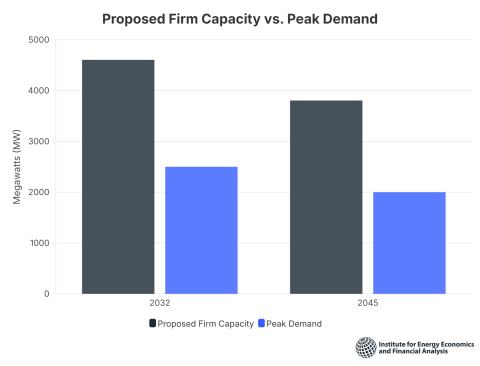Corporate case study: Facebook's green energy goals are speeding the transition of New Mexico's electricity sector
Download Full Report
View Press Release
Key Findings
In October 2016, Facebook Inc. broke ground on a 300-acre data-storage site in Los Lunas, N.M., creating a near-overnight boom in the community of 15,000. The project already has delivered remarkable local fiscal and payroll gains, and the 3-million-square-foot complex is still not completely built out.
The data center has been a sudden force, as well, in the reshaping of how electricity is now generated in New Mexico—pushing the state to embrace a much-higher percentage of renewable energy much sooner than previously projected.
Executive Summary
The particulars of the project’s many impacts are striking:
- The Los Lunas data center has supported upward of 1,000 construction jobs day in and day out, most of which have gone to local subcontractors.
- The center will require a staff of 200 to operate beyond 2023, along with a host of supporting vendors.
- Los Lunas’ gross receipt tax (GRT) revenues, the main source of municipal funding in the state, have increased by 85%, and dozens of new businesses and developments have come to town as a project byproduct.
- The data center in and of itself is driving a rapid shift toward renewable energy by Public Service Company of New Mexico (PNM), which is projected now to get 43% of its power generation from wind and solar by 2023, up from 9.7% in 2013.
- Coal, once the mainstay of PNM, will account for less than 7% of PNM’s power needs within two years.
- It could serve as a model for other communities seeking fiscal and payroll stability built on economic diversification and sustainable energy.
While the state of New Mexico gave Facebook ample taxpayer-supported incentives to build at Los Lunas, such incentives are not uncommon, and they do not always work. What sets the Los Lunas example apart is its clearly beneficial local economic impacts and its market-moving renewable-energy requirements.















